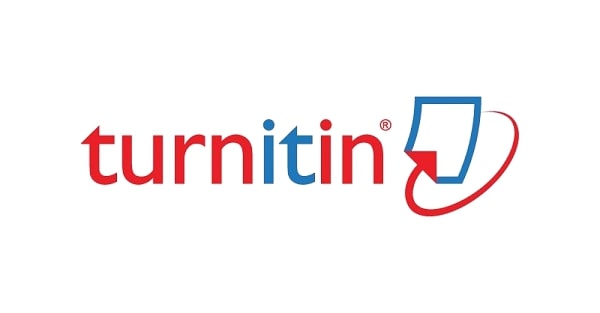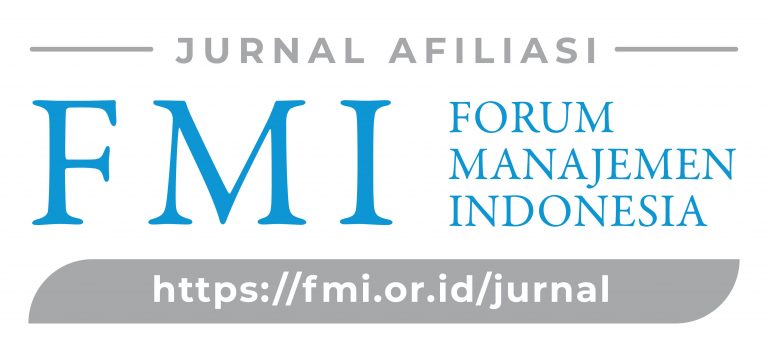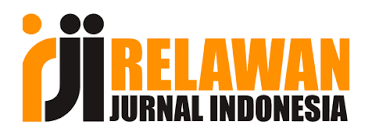ANALISIS LAPORAN KEUANGAN DALAM RANGKA MENILAI KINERJA PERUSAHAAN PT. TELEKOMUNIKASI INDONESIA TBK. (PERIODE 2014-2018)
DOI:
https://doi.org/10.55732/unu.gnk.2020.02.2.2Keywords:
Financial Performance, Company PerformanceAbstract
This research is a qualitative research with descriptive approach. Data collection techniques in this study are documentation techniques with secondary data, namely financial statement from 2014 to 2018 which include balance sheet and income statements and annual reports from 2014 to 2018. Ratio analsis techniques which include Liquidity ratio, Solvability, Activity, and Profitability. While the method used is time series analysis. After the analysis is carried out, it can be seen that the company’s financial performance is carried out from a good level of Liquidity in meeting its short term obligations, because the Current Ratio and Cash Ratio are able to pay current debts and operating costs. The value of the Solvability ratio, namely the Debt Ratio and Debt to Equity Ratio, were below the average service industry. This shows the decrease in company operations that are financed by loan funds. The value of the Activity ratio, namely Total Asset Turnover and Fixed Asset Turnover, which turnover is very slow, and the ratio is below the average of the service industry. The value of the Profitabilityratio, namely Gross Profit Margin and Net Profit Margin, is in poor condition, because the value is below the service industry average, but in good condition based on the Rate On Equity. And the condition of company’s performance from a financial perspective is said good, and based on the customer perspective it is said to be good.References
Erica Denny. (2018) Analisis Rasio Laporan Keuangan Untuk Menilai Kinerja Perusahaan PT. Kino Indonesia Tbk. Jurnal Ilmiah Mahasiswa AMIK BSI Vol.2 No. 1 (2018) Kota Jakarta.
Fahmi, Irham. (2017). Analisis Laporan Keuangan. Bandung:Alfabeta.
Khanjaya Yuliane Cindy, Adi MoelyaTriyogo. (2016). Analisis Laporan Keuangan PT. Ciputra Property Tbk Sebagai Dasar Penilaian Kinerja Perusahaan Pada Periode 2011-2014. Jurnal Ilmiah Mahasiswa Universitas Bina Insani Vol. 1 No.1(2016) Kota Bekasi.
Manis, S. (2017, 08 26). Pengertian, Tujuan, Pengukuran Dan Penialian Kinerja Keuangan Terlengkap. www.pelajaran.co.id (Diakses pada tanggal 13 Maret2020).
Moleong, Lexy J. (2017). Metode Penelitian Kualitatif. Edisi Revisi. Bandung: PT. Remaja Rosdakarya.
Nur Mutiara, Rahmah, Komariah Euis.(2016). Analisis Laporan Keuangan Dalam Menilai Kinerja Keuangan IndustriY ang Terdaftar di BEI (StudiKasus PT. Indocement Tunggal Prakarsa Tbk). Jurnal Ilmiah Mahasiswa Universitas BinaInsani Vol. 1 No. 1 (2016) Kota Bekasi. Pengetahuan.
Safriadi, Pohan (2017). Analisis Laporan Keuangan Untuk Mengukur Kinerja Keuangan Pada Perusahaan Yang Go Public di Bursa EfekIndonesia (StudiKasus Pada PT.Tiga Pilar Sejahtera Food, Tbk). Jurnal Ilmiah Mahasiswa STIEAl-Washliyah Vol. 1 No. 1 (2017) Kota Sibolga, Sumatera Utara.
Sugiyono. (2015). Metode Penelitian Kualitatif, Kuantitatif danR&D. Bandung:Alfabeta.
Sujarweni, Wiratna. (2017). Analisis Laporan Keuangan, Teori, Aplikasi,dan Hasil Penelitian. Yogyakarta: Pustaka Baru Press.
Sukamulja. Sukmawati. (2017). Analisis Laporan Keuangan. Sebagai Dasar Pengambilan Keputusan Investasi.Yogyakarta: Andi dengan BPFE
Syarfan Ode La & Dewi Kurnia Ramadhan. (2016). Analisis Laporan Keuangan Mahasiswa. Sidoarjo: Universitas Nahdlatul Ulama Sidoarjo Dalam Menilai Kinerja Perusahaan Pada PT. Ricky Kurniawan Kertapersada (Makin Group) Jambi. Jurnal Ilmiah Mahasiswa dan Dosen Universitas Islam Vol. 2 No. 2 (2016) Kota Riau.
Trianto Anton. (2017). Analisis Laporan Keuangan Sebagai Alat Untuk Menilai Kinerja Keuangan Perusahaan Pada PT. Bukit Asam(Persero) Tbk. Tanjung Enim. Jurnal Ilmiah Mahasiswa Politektik Darusalam Vol. 8 No. 3 (2017) Kota Palembang
Downloads
Published
Issue
Section
License

This work is licensed under a Creative Commons Attribution 4.0 International License.
Authors who publish with this journal agree to the following terms:
Authors retain copyright and grant the journal right of first publication with the work simultaneously licensed under a Creative Commons Attribution License that allows others to share the work with an acknowledgement of the work's authorship and initial publication in this journal.
Authors are able to enter into separate, additional contractual arrangements for the non-exclusive distribution of the journal's published version of the work (e.g., post it to an institutional repository or publish it in a book), with an acknowledgement of its initial publication in this journal.
Authors are permitted and encouraged to post their work online (e.g., in institutional repositories or on their website) prior to and during the submission process, as it can lead to productive exchanges, as well as earlier and greater citation of published work (See the Effect of Open Access).
















